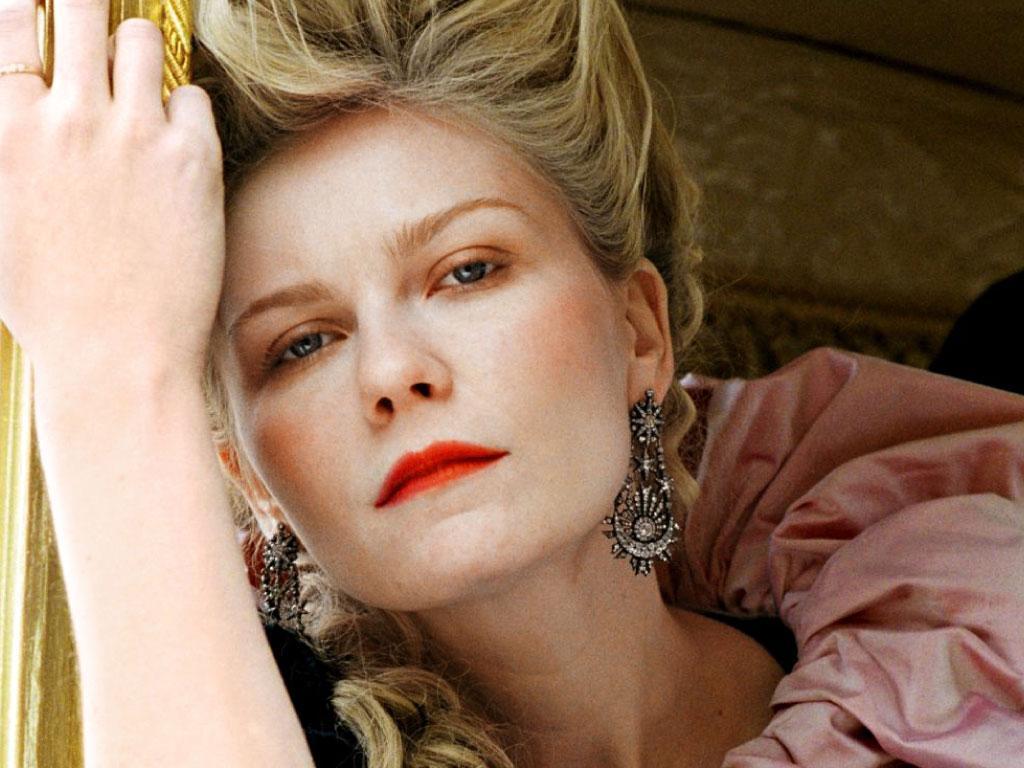Use films to teach history? Only if kids need a lesson in historical half-truths
School children will assume Marie Antoinette wore Manolo Blahniks and Kennedy was shot by the FBI


Eddie Redmayne, the actor – Les Misérables, War Horse, Birdsong – and chap with the thousand-mile gaze and the peculiar mouth, has been singing the praises of movies. Supporting an initiative to encourage children to make, watch and understand films, he said that film should be taught in schools "to inspire the next generation to work in that medium" – and that schools "could also use film to teach pupils about history".
Well, up to a point, Eddie. Teachers could have a ball using the medium to demonstrate how blatantly, crazily and gleefully film-makers have consistently screwed around with history, down the decades, in the interests of amusing audiences, until it’s now a full-time job to balance the filmic bollocks with the prosaic actualité.
Students of the French Revolution, for instance, may learn from Sofia Coppola’s Marie Antoinette (2006) that the Queen, played by Kirsten Dunst, spent all her time wearing Manolo Blahniks and scoffing Ladurie macaroons, and that her most famous directive was “Let them eat custard”. They may be impressed by the way Marie, when a mob of sans-culottes is attacking Versailles, comes out on to the palace balcony to confront them, at which they fall respectfully silent rather than tear her to pieces.
Scholars delving into American history will be interested to find (in Oliver Stone’s JFK) that President Kennedy was assassinated by a cabal of military, CIA and FBI types to stop him pulling out of Vietnam; also that, after the American Civil War, peace and harmony were brought to the Southern states by the heroic vigilante endeavours of the Ku Klux Klan (Birth of a Nation, 1915); also that, when Pearl Harbor was attacked in 1944, as reported in Michael Bay’s 2001 film, it was attacked by torpedo planes (handy when attacking an airfield) which were shot down in huge numbers by the plucky US fighter pilots (they weren’t).
Children interested in English history will enjoy discovering what a bitch Queen Elizabeth I was to her chief adviser, Sir William Cecil, whom she forced into retirement. That’s if you believe Shekhar Kapur’s 1998 film Elizabeth, starring Cate Blanchett as the ruthless-but-virginal ginge. Tudor historians will tell you that Sir William remained her devoted adviser until she died, but what do they know?
As for the Queen’s favourite playwright, you can learn from Shakespeare In Love (1998) that he apparently used to write plays without the faintest idea of how they might end – until he meets some foxy actress who inspires him. The suggestion that he relied on historical chronicles for his plots is probably just hooey.
Devotees of the Second World War will discover, in the film U-571 (released in 2000) that plucky American sailors and intelligence officers plotted to capture an Enigma coding machine from a stricken U-boat, whereas it was entirely the British navy that rescued Enigmas from the subs.
But then, finding that American movies routinely take the credit for other people’s efforts is hardly a surprise. When future scholars look at The Monuments Men, the new film starring and directed by George Clooney, they will find the whole initiative for saving priceless artwork from Nazi looters came from Clooney’s character, George Stout. In fact, if we may use the word, much of the heavy lifting was first done by two British lieutenant-colonels in Libya, doing their best to protect old Roman ruins, something that came to the attention of Churchill and Roosevelt.
Scottish scholars, whose parents support the “yes” vote, can stoke their nascent indignation about the ghastly English by watching Braveheart, something of a byword when it comes to historical inaccuracy. They can soak up the supposed fuming antipathy felt by the Scots towards their oppressors in the 13th century (in fact, their relations had been mainly cordial for the previous 100 years), the romance between William Wallace and the king’s daughter Isabella (who would have been a baby at the time), and the fact that the Scots wore kilts in the Middle Ages (they didn’t).
Right at the heart of the Scots antagonism towards England is a movie distortion. Right at the heart of the new blockbuster starring Hollywood’s finest is a movie distortion. Are you absolutely sure, Eddie, that film is a good way to acquaint a new generation with the past? What did Karl Marx have to say about education? “The first battlefield is the re-writing of history.”
You, too, can be an intellectual titan for only £167.50
What’s this that has just dropped through my letter box? It’s a missive from the International Biographical Centre in Cambridge, with a very flattering offer. It explains that the centre publishes a book, new to me, I’m afraid, entitled 2000 Outstanding Intellectuals of the 21st Century and would like me to be in the 8th edition.
Blimey. The letter starts by quoting the Oxford English Dictionary definition of an intellectual (“a person possessing a good understanding, enlightened person”) and explains: “Surely, therefore, this definition is the reason for your selection to be included in this prestigious publication… I invite you to take your place within its pages.”
A niggling concern about the slightly illiterate near-English of my correspondent furrows my brow, before I reflect that, yes, my exploits as a titan of intellectual brilliance over the years – seen in my many articles on fish, Danish erotica and male-pattern alopecia, and my seminal essay “Whither the Cravat?” – are now receiving their just reward.
It is only when I turn over the Personal Biographical Questionnaire and discover that copies of 2000 Outstanding Intellectuals of the 21st Century cost £167.50 each that I smell a rat. Although they’ll throw in an Outstanding Intellectual Diploma “printed in three colours inscribed with your name and chosen citation” for just another £75…
Ozzy Osborne on a luge, anyone?
I cannot join in the mockery that has greeted the spectacle of Vanessa-Mae, the Thai violinist, at the Sochi Winter Games. The former virtuoso, famous for posing in the sea, fiddle aloft, in a wet white frock, represented her native Thailand in the giant slalom. She was ranked 2,253 in the world and came 67th and last, 50 seconds behind the winner. But fair play to her for risking her delicate, heavily insured, multimillionaire hands and wrists. And who could criticise her for pursuing a second passion after music?
I’m cudgelling my brains trying to think which other top musicians would cut a dash on the slopes. Can you imagine Sir Elton John careering down the skeleton run, nose barely an inch above the ice?
Would Eric Clapton and Jeff Beck abandon their Fender guitars to do some vigorous sideways-brushing in the quarter finals of the curling? Can we look forward to admiring Ozzy Osbourne going at 90mph on the one-person luge? Actually I’d pay a lot of money to see that.
Twitter: @JohnHenryWalsh

Join our commenting forum
Join thought-provoking conversations, follow other Independent readers and see their replies